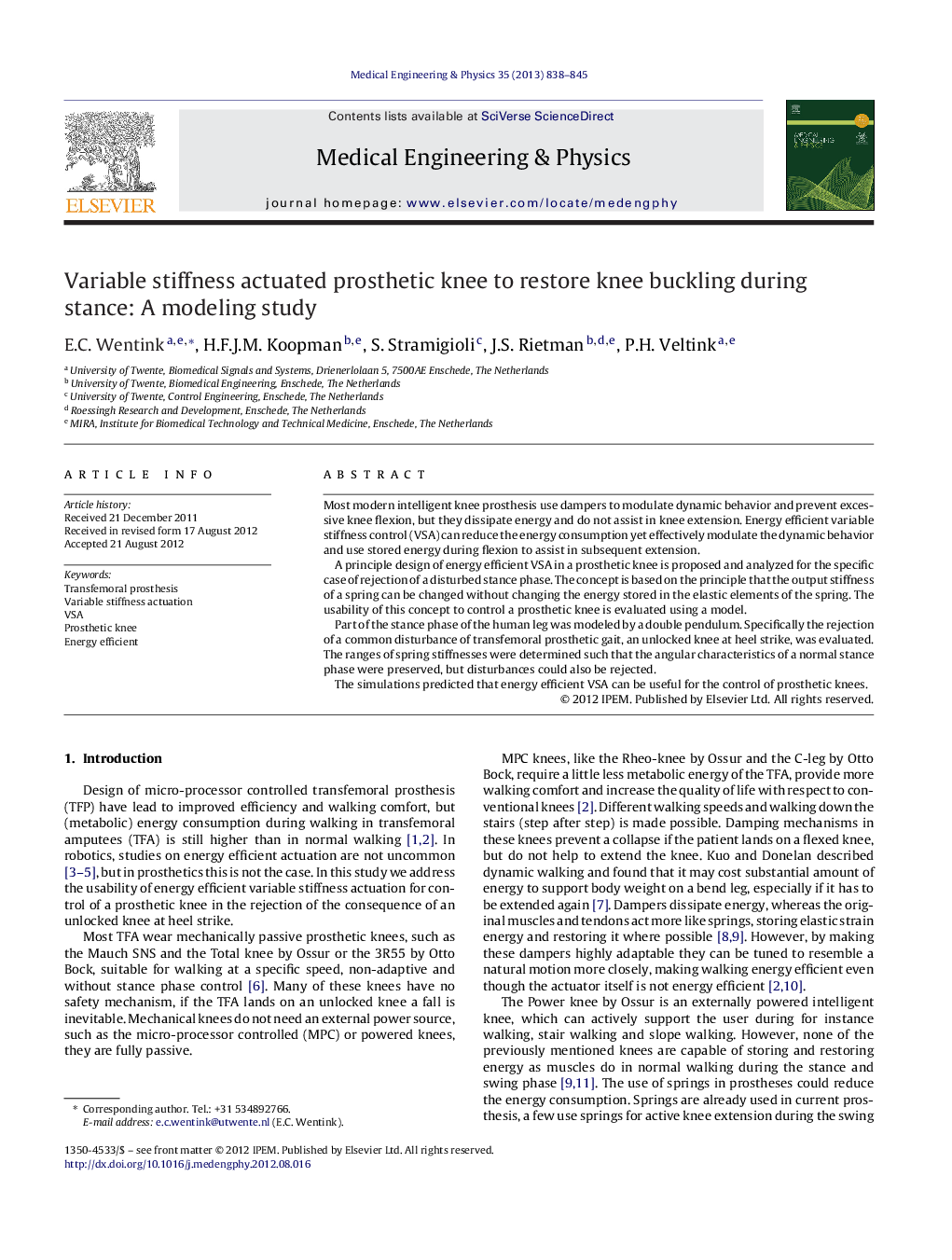| کد مقاله | کد نشریه | سال انتشار | مقاله انگلیسی | نسخه تمام متن |
|---|---|---|---|---|
| 876313 | 910834 | 2013 | 8 صفحه PDF | دانلود رایگان |

Most modern intelligent knee prosthesis use dampers to modulate dynamic behavior and prevent excessive knee flexion, but they dissipate energy and do not assist in knee extension. Energy efficient variable stiffness control (VSA) can reduce the energy consumption yet effectively modulate the dynamic behavior and use stored energy during flexion to assist in subsequent extension.A principle design of energy efficient VSA in a prosthetic knee is proposed and analyzed for the specific case of rejection of a disturbed stance phase. The concept is based on the principle that the output stiffness of a spring can be changed without changing the energy stored in the elastic elements of the spring. The usability of this concept to control a prosthetic knee is evaluated using a model.Part of the stance phase of the human leg was modeled by a double pendulum. Specifically the rejection of a common disturbance of transfemoral prosthetic gait, an unlocked knee at heel strike, was evaluated. The ranges of spring stiffnesses were determined such that the angular characteristics of a normal stance phase were preserved, but disturbances could also be rejected.The simulations predicted that energy efficient VSA can be useful for the control of prosthetic knees.
Journal: Medical Engineering & Physics - Volume 35, Issue 6, June 2013, Pages 838–845